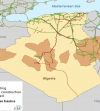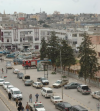The region is marked by high unemployment rates, especially among young people and women. The average unemployment rate is around 16%, but it is much higher in some countries (Lebanon, Jordan, Palestine). These averages also mask significant gender and age differences. This persistence of endemic unemployment is partly due to a mismatch and mismatch between labor supply and demand, particularly in Jordan, Lebanon, Iraq and the Palestinian Territories, where most young people have reaches a level of education that is too high for the jobs created and available.
The weak economic diversification and the excessive role of the public sector affect the job market and maintain its dysfunction.
Iraq, a world oil exporter, faces difficulties in diversifying its productive and industrial base, which limits opportunities for job creation. Iran, the area’s leading oil exporter, is less dependent on this sector with a relatively diversified economy. Job creation in Jordan is poor and the public sector continues to attract a large proportion of Jordanians by offering higher salaries and higher levels of comfort.
In Egypt, while economic growth is mainly driven by capital-intensive sectors (transport, hydrocarbons, construction, etc.), job creation in the private sector only increased by an annual average of 2% between 2010 and 2019 .
The difficulty of access to the labor market and the low levels of remuneration throughout the Middle East area encourage many workers to emigrate and fuel the brain drain.
Egypt and Jordan have experienced massive emigration to Gulf countries. Egyptian expatriates work there mainly in hydrocarbons and construction, in primary education and medical services for the most qualified. In Jordan, since the 1970s, many workers have left for the Gulf countries where they receive higher wages and often provide more qualified jobs.
This emigration could however slow down under the effect of labor nationalization policies in the Gulf countries. In Lebanon, the habitual emigration of part of the Lebanese youth, students or graduates, has increased since the beginning of the crisis.
Despite difficulties in accessing reliable data, the Near East has one of the highest rates of informality in the world, with almost 60% employed in the informal sector, mainly in agriculture , construction, as well as wholesale and retail trade.
Notably, Syria has an informality rate above 90%. The high level of social vulnerability pushes more people to enter the labor market, mostly informally. The Lebanese informal sector also seems to have developed in recent years, in particular smuggling with Syria and drug trafficking (by nature very difficult to estimate).
The development of the cash economy has notably contributed to the increase in informality in the country. In Iraq and Egypt, the predominance of the informal economy is striking, with 95% and 90% of businesses respectively reportedly not officially registered.
Finally, in Egypt, the number of people working in informality increased by +23% between 2018 and 2019, especially among men.
Source French Embassy in Lebanon-Economic Service











Réagissez à cet article